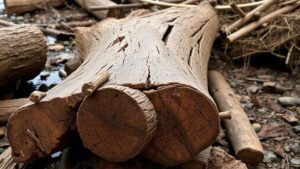Using NOAA Oceanographic Data to Pinpoint Underwater Relic Hotspots
Using NOAA Oceanographic Data to Pinpoint Underwater Relic Hotspots
Underwater archaeology has emerged as a vital field for uncovering the submerged past of human civilization. The integration of data from the National Oceanic and Atmospheric Administration (NOAA) into this domain has transformed methodologies in locating and analyzing underwater relics. This article explores how NOAAs oceanographic data can identify hotspots of underwater relics, enhancing research efforts into historical maritime activities.
Understanding NOAA Oceanographic Data
NOAA provides a comprehensive array of data that includes oceanographic measurements, coastal surveys, and climate monitoring. agencys data includes parameters such as:
- Sea level rise and changes in ocean currents
- Temperature and salinity profiles
- Topographic maps of the ocean floor
This data is instrumental when searching for underwater relics, as it provides insight into historical environmental conditions that may have influenced the locations of sunken vessels, abandoned ports, and submerged settlements.
Key Historical Context
Historical shipwrecks and underwater sites often represent significant cultural and economic activities. For example, the famed Spanish galleon Nuestra Señora de Atocha, which sank off the coast of Florida in 1622, is a prime example. Its discovery in 1985, resulting from meticulous research combining historical records and oceanographic data, yielded over $400 million in treasures (Treasure Salvors, Inc.).
As the study of underwater archaeology progresses, the use of NOAA data becomes increasingly relevant. By understanding historical shipping routes and environmental conditions, archaeologists can predict potential hotspots for future studies.
The Role of Oceanographic Data in Identifying Hotspots
Oceanographic data can reveal patterns that indicate optimal areas for archaeological exploration. For example, currents can shift and redistribute debris, while temperature and salinity levels can affect the preservation of organic materials. The following factors make NOAA data invaluable:
- Current Dynamics: Knowledge of prevailing currents helps archaeologists anticipate the locations where artifacts may have drifted.
- Thermal Stratification: Understanding temperature layers in water can indicate how well relics have been preserved.
- Geographic Information Systems (GIS): Integrating NOAA data into GIS allows researchers to visualize hotspots based on historical ship routes, archaeological finds, and natural features.
Case Studies of Successful Applications
Several case studies illustrate the successful application of NOAA data in uncovering underwater relic hotspots:
- The USS Arizona Memorial: Studies incorporating NOAA data have improved understanding of the currents around Pearl Harbor and have led to better preservation practices for the wreck.
- Spanish Forts in Florida: By analyzing historical flooding and climate data, researchers have pinpointed potential sites of submerged coquina structures.
- The Black Sea Maritime Archaeology Project: This multi-national project utilized NOAA bathymetric data, leading to the discovery of numerous shipwrecks dating back thousands of years.
Addressing Concerns in Data Application
Despite the advantages of using NOAA data, potential concerns may arise, such as:
- Over-reliance on data without proper field verification.
- Challenges in interpreting historical data due to changes in environmental conditions.
To mitigate these issues, interdisciplinary approaches combining marine science with archaeological practices are essential. Collaboration among marine biologists, climatologists, and archaeologists will enhance the robustness of findings.
Actionable Takeaways
The integration of NOAA oceanographic data into underwater archaeology can significantly enhance efforts in pinpointing relic hotspots. Key actionable strategies include:
- Promoting interdisciplinary research teams to leverage expert knowledge across fields.
- Utilizing advanced GIS technologies combined with NOAAs datasets for predictive modeling.
- Engaging in community outreach and education to foster appreciation for underwater cultural heritage.
To wrap up, NOAA oceanographic data serves as a comprehensive tool that, when harnessed properly, significantly advances the field of underwater archaeology. By pinpointing relic hotspots, researchers are equipped not only to explore but to protect and understand the submerged histories that are invaluable to human heritage.



